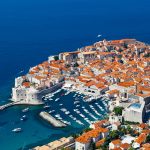In line with its reputation for being expensive in all manners, flat tax is set to rise in Dubrovnik next year, much to the dismay of the city’s very many private renters.
As Marija Crnjak/Poslovni Dnevnik writes on the 27th of December, 2018, although private renters have already argued that the new law on income tax will significantly increase their burdens, based on the decisions taken by local authorities, it seems that only a few will actually decide to go for more drastic measures in the next year, while a good deal of 2019’s taxes will remain at this year’s level.
According to the results of Poslovni Dnevnik‘s mini poll, it would appear that only Dubrovnik will see the flat tax rate increase significantly, with projections suggesting that the optimal amount will be 750 kuna for renters in ”tourist class A” areas, which along with Dubrovnik includes Orašac, the nearby islands of Lopud and Koločep (Kalamota), as well as Šipanska Luka.
In addition, increases in the aforementione tax are expected in Bol on the island of Brač, but at this moment in time the amount isn’t known. Most of the local self-government units that Poslovni Dnevnik contacted stated that they still have to create a draft proposal for a decision on the flat tax amount.
All of them are waiting for a new order to come into force, which defines the method of the determining and the calculating of flat tax. After that, the decision-making procedure on the amount of flat tax will be launched, which takes us into 2019, and could be possible by the end of January next year.
As stipulated by the law, from the present maximum amount of 300 kuna, the flat tax amount can’t be less than 150 kuna, or more than 1500 kuna per bed or accommodation unit in a camp or Robinson accommodation.
A decision should still needs to be made by by Rovinj, Zadar, Split, and Pag. At the meeting of the leaders of the local self-government units of the Opatija Riviera (Opatija, Lovran, Matulji and Mošćenička Draga), a single amount of flat tax per bed or accommodation unit was agreed in mid December, and the highest amount of flat tax was 345 kuna, corresponding to the flat tax amount of sojourn fees for 2019.
The highest amount of flat tax will of course be reported by those areas in Croatia which are classified as class A tourist destinations, they state from Opatija, which will also formalise its decision after the adoption of the order.
The Mayor of the City of Poreč will send a proposal to the City Council that the flat tax for rent per bed or accommodation unit in a camp remains the same as it is to date, ie 300 kuna per bed, and 350 kuna per accommodation unit in a camp.
The City of Šibenik has stated that the flat tax rate will not alter. Similarly, the flat tax rate has no intention of being raised in the Primošten municipality either. Responses from Zagreb, Novalja, Crikvenica, Hvar, and Mali Lošinj are still awaited.
Make sure to stay up to date with our dedicated lifestyle and business pages for much more.
Click here for the original article by Marija Crnjak for Poslovni Dnevnik








